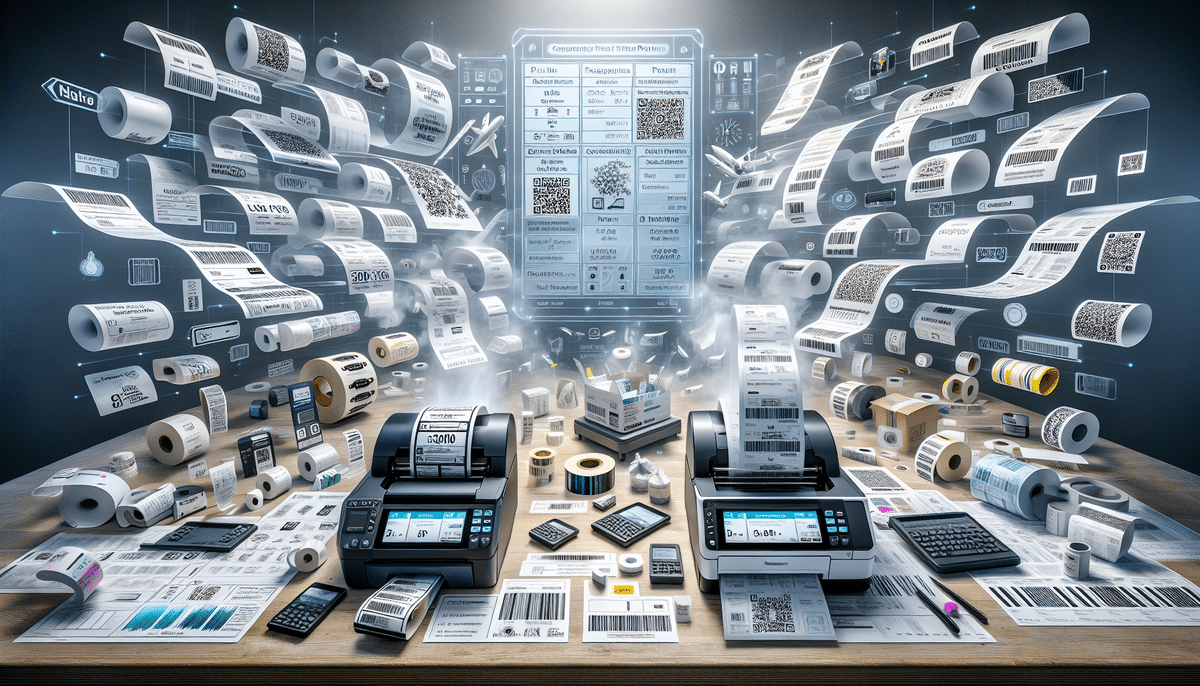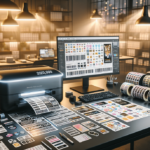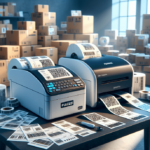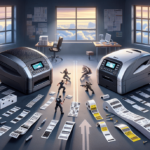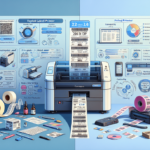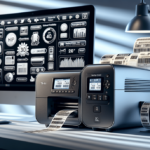Brother QL-1100 vs TSC TTP-244CE: A Comprehensive Comparison
Are you searching for a reliable label printer to enhance your business operations? Deciding between the Brother QL-1100 and the TSC TTP-244CE can be challenging. This comprehensive comparison delves into the key features, performance metrics, and overall value of each label printer to help you make an informed decision.
Understanding Label Printers
Label printers are specialized devices essential for businesses that require efficient and high-quality label production. Whether it's for inventory management, shipping, or product branding, label printers play a crucial role in streamlining operations.
Types of Label Printers
- Desktop Label Printers: Perfect for small businesses or home offices, offering easy setup and compact designs.
- Industrial Label Printers: Built for high-volume printing in large-scale environments like warehouses and manufacturing plants.
- Portable Label Printers: Lightweight and mobile, ideal for on-the-go labeling needs.
Why Your Business Needs a Label Printer
Integrating a label printer into your business can significantly enhance efficiency and accuracy. These printers are invaluable across various industries, including:
- Logistics and Supply Chain
- Healthcare
- Retail
- Food and Beverage
Utilizing label printers allows for on-demand printing, reducing the need for bulk orders and minimizing inventory costs. High-quality, durable labels also decrease the likelihood of reprinting due to damage, ensuring consistent branding and improving customer recognition.
Moreover, advanced features like barcode and QR code printing facilitate better inventory tracking and supply chain management, enhancing overall operational efficiency.
Key Features of the Brother QL-1100 and TSC TTP-244CE
Before diving into an in-depth comparison, it's essential to understand the primary features of each printer:
Brother QL-1100 Features
- Print speeds of up to 69 labels per minute
- High print resolution of up to 300 dpi
- Supports labels up to 4 inches in width
- Connectivity via USB, Ethernet, Wi-Fi, and Bluetooth
- Compatibility with Windows and Mac operating systems
- Built-in automatic cutter for seamless label production
- Supports large label rolls up to 4 inches in diameter
TSC TTP-244CE Features
- Print speeds of up to 4 inches per second
- Print resolution of up to 203 dpi
- Supports labels up to 4.25 inches in width
- Connectivity via USB and Ethernet
- Compatibility with Windows and Mac operating systems
- Durable metal construction suitable for industrial environments
- Enhanced memory capacity of up to 4MB for complex label designs
Design and Build Quality
Durability and design play pivotal roles in the performance of label printers:
- Brother QL-1100: Features a sleek, compact design ideal for smaller workspaces. Its user-friendly interface includes easy-to-navigate buttons and a clear LCD screen.
- TSC TTP-244CE: Constructed with robust metal materials, making it resilient in harsh industrial settings. The interface, while feature-rich, may require a brief learning period for new users.
Print Technology: Direct Thermal vs. Thermal Transfer
Selecting the right print technology is crucial for your labeling needs:
Brother QL-1100: Direct Thermal Printing
Direct thermal printing uses heat to create images on labels without the need for ink or toner, reducing maintenance costs. This method is ideal for:
- Short-term applications like shipping labels, receipts, and tickets.
However, direct thermal labels may fade when exposed to heat and light over time. For more information on printing technologies, refer to TechTarget's guide on thermal printers.
TSC TTP-244CE: Thermal Transfer Printing
Thermal transfer printing utilizes a ribbon to transfer ink onto labels, resulting in durable and long-lasting prints. This technology is suitable for:
- Long-term applications such as product labeling, asset tracking, and inventory management.
Thermal transfer prints are resistant to abrasion, moisture, and chemicals, making them ideal for demanding environments. Learn more about thermal transfer printing at Printing Industries of America's resource on thermal transfer.
Printing Speed Comparison
Efficiency can significantly impact your business operations:
- Brother QL-1100: Exceptional speed with up to 69 labels per minute, ideal for high-volume printing needs.
- TSC TTP-244CE: Fast printing at 4 inches per second, suitable for most business requirements.
The Brother QL-1100's high-speed capabilities are beneficial for businesses requiring rapid label production, while the TSC TTP-244CE offers a balanced speed that meets standard labeling demands efficiently.
Print Resolution: 300 dpi vs. 203 dpi
Print resolution determines the clarity and detail of your labels:
- Brother QL-1100: High resolution of 300 dpi, ensuring sharp and detailed prints, ideal for intricate graphics and small fonts.
- TSC TTP-244CE: Adequate resolution of 203 dpi, suitable for standard labeling needs without compromising essential details.
While higher resolution offers better print quality, it's essential to consider other factors like label material and print technology to achieve the desired results.
Label Size Options and Compatibility
Versatility in label size is crucial for diverse business applications:
- Brother QL-1100: Accommodates labels up to 4 inches wide.
- TSC TTP-244CE: Supports slightly larger labels up to 4.25 inches wide.
Both printers are compatible with various label types, including die-cut, continuous, and pre-sized labels, ensuring flexibility to meet specific business requirements.
Connectivity Options: USB, Ethernet, Wi-Fi, and Bluetooth
Seamless connectivity enhances the functionality and ease of use of label printers:
- Brother QL-1100: Offers extensive connectivity options including USB, Ethernet, Wi-Fi, and Bluetooth, enabling wireless printing from multiple devices.
- TSC TTP-244CE: Provides reliable USB and Ethernet connectivity, though lacking wireless options.
The Brother QL-1100's wireless capabilities offer greater flexibility and ease of integration with various devices and networks, making it a versatile choice for modern business environments.
Software Compatibility
Compatible software simplifies label design and printing processes:
- Brother QL-1100: Works seamlessly with Brother's P-touch Editor, BarTender, and other third-party applications.
- TSC TTP-244CE: Compatible with TSC's PrintPro Designer, NiceLabel, and other popular labeling software.
Ensuring compatibility with your existing software infrastructure can streamline label creation and enhance productivity.
User Experience: Ease of Use and Interface
A user-friendly interface can significantly improve operational efficiency:
- Brother QL-1100: Features an intuitive interface with straightforward buttons and a clear LCD screen, facilitating easy navigation.
- TSC TTP-244CE: Comes with a more complex interface that may require additional training for optimal use.
While both printers offer automatic label detection and user-friendly control panels, the Brother QL-1100 provides a more accessible and seamless user experience.
Maintenance and Support
Reliable maintenance and support are essential for minimizing downtime and ensuring longevity:
- Brother QL-1100: Includes a two-year limited warranty with comprehensive support resources such as user manuals and video tutorials.
- TSC TTP-244CE: Offers a one-year warranty along with similar support materials to assist with maintenance and troubleshooting.
The extended warranty period of the Brother QL-1100 provides added peace of mind for businesses seeking long-term reliability.
Pricing and Value for Money
Budget considerations are pivotal when selecting a label printer:
- Brother QL-1100: Positioned at a higher price point but justifies the cost with superior print speeds, higher resolution, and extensive connectivity options.
- TSC TTP-244CE: More affordable, offering solid performance and reliability for standard labeling needs.
For businesses with a limited budget, the TSC TTP-244CE presents excellent value. In contrast, those requiring advanced features and higher performance may find the Brother QL-1100 to be a worthwhile investment.
Pros and Cons of Each Label Printer
Brother QL-1100 Pros:
- High print speeds
- Superior print resolution
- Comprehensive wireless connectivity
- Automatic label cutter
Brother QL-1100 Cons:
- Higher initial cost
- Limited compatibility with Mac OS 11
TSC TTP-244CE Pros:
- Affordable pricing
- Good print quality for standard labels
- Supports a variety of operating systems
TSC TTP-244CE Cons:
- Slower printing speeds compared to Brother QL-1100
- Lower print resolution
- Absence of wireless connectivity
Conclusion: Which Label Printer Is Right for Your Business?
Both the Brother QL-1100 and the TSC TTP-244CE are outstanding label printers, each catering to different business needs. If your business demands high-volume printing with superior speed and resolution, the Brother QL-1100 stands out as the optimal choice despite its higher price.
Conversely, for businesses operating on a tighter budget that require reliable performance for standard labeling tasks, the TSC TTP-244CE offers excellent value without sacrificing essential functionalities. Assess your specific business requirements, budget constraints, and desired features to select the label printer that best aligns with your operational goals.
For more details and to explore these label printers further, visit the official websites:
By thoroughly evaluating the features, performance metrics, and costs, you can make a well-informed decision that enhances your business's labeling efficiency and accuracy.















